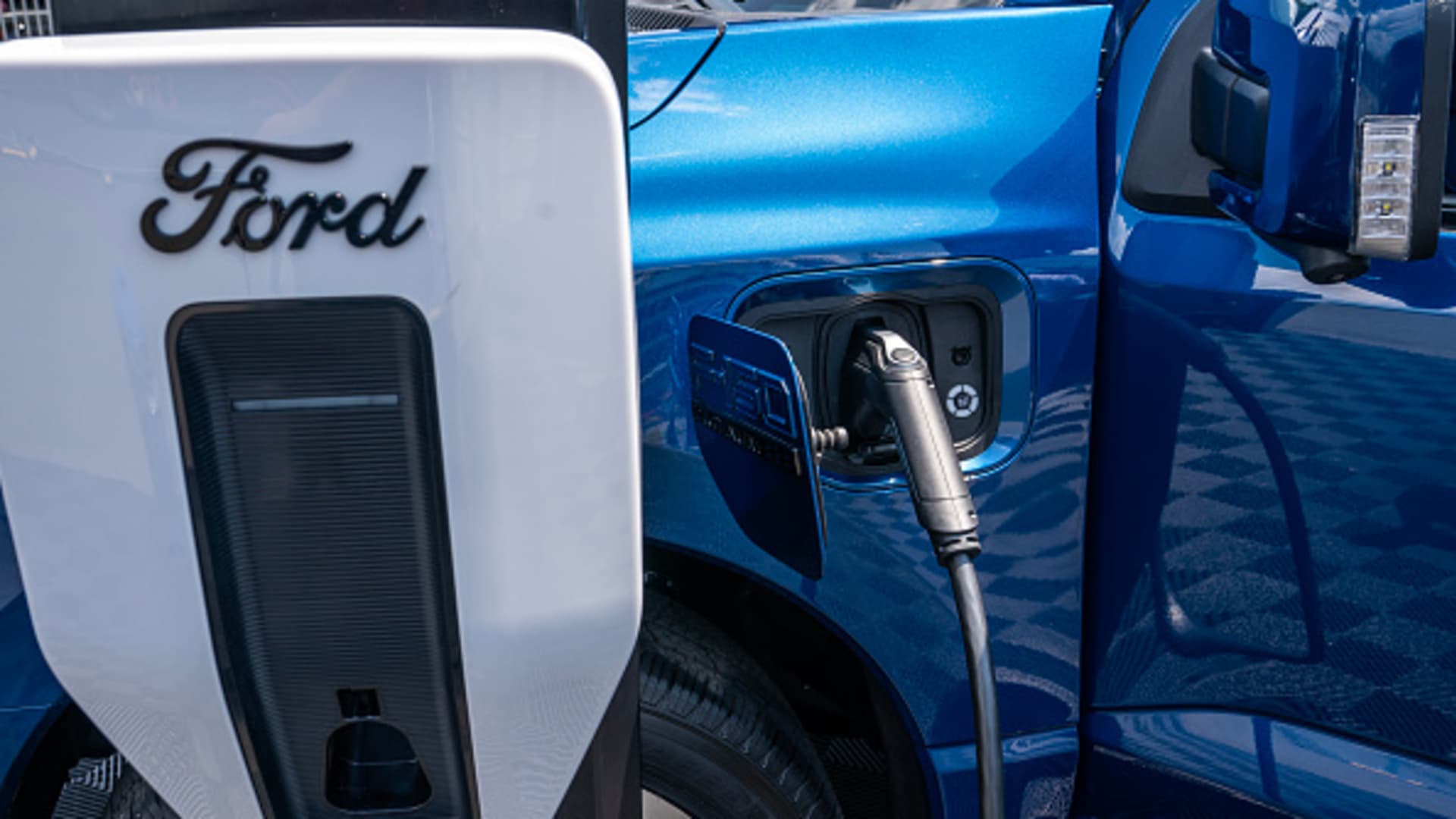New energy vehicles for export at Lianyungang Port, Jiangsu Province, China, on April 25, 2024.
Nurphoto | Nurphoto | Getty Images
Automotive companies in China sold more cars than their U.S. counterparts for the first time last year, boosted by BYD and growth in emerging markets, researcher Jato Dynamics said in a report published Thursday.
Chinese brands, led by Shenzhen-based BYD, sold 13.4 million new vehicles last year, while American brands sold about 11.9 million, the data showed. Japanese brands led with 23.59 million sales.
China’s sales growth also outpaced the U.S., up 23% from the previous year compared to the U.S.’s 9%.
“Negligence from legacy automakers, which has resulted in consistently high car prices, has inadvertently driven consumers toward more affordable Chinese alternatives,” Jato senior analyst Felipe Munoz said in the report.
Chinese carmakers, like its leading car brand BYD, have expanded globally as an electric-vehicle price war at home has pushed down prices and weighed on profit margins.
Brands from China have made particular inroads in emerging economies, where Jato said one in five new car sales were made last year amid increased global demand.
“Over 17.5 million new cars were sold in the emerging economies in 2023. That is more than the total sales in the U.S. or Europe during the year,” said Munoz.

Chinese car makers picked up sizable market share across the Middle East, Eurasia and Africa while also posting growth in Latin America and Southeast Asia, the report said.
Meanwhile, some Chinese brands also picked up share in developed economies, including Europe, Australia, New Zealand and Israel.
The growth came despite increased trade animosity between China and the West and other factors like conflicts in Europe, high interest rates and high vehicle prices, Munoz said.
According to the report, sales grew in every region, except Africa, with Europe growing fastest due to booming demand in Turkey.
But the industry faces increased trade headwinds in 2024, with more countries enacting measures to protect local industry from cheap Chinese exports.
This week, the EU announced an increase of tariffs on Chinese EVs of up to 38%. That comes after the U.S. quadrupled tariffs on Chinese EVs to 100%.
Turkey also reportedly announced 40% additional tariffs on vehicles from China on Saturday, signaling some emerging markets may follow suit.





